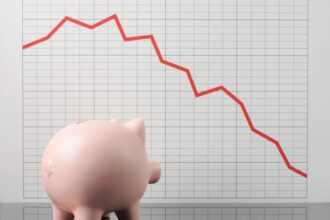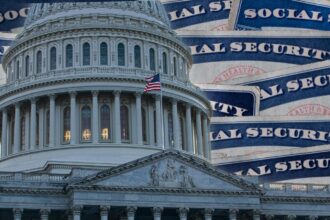Late last year, Congress passed and President Biden signed SECURE 2.0 legislation as part of the Omnibus spending bill. Enactment of this legislation is a clear signal that policymakers understand the depths of the frightening retirement savings shortfall facing millions of Americans. The reasons are many for the nation’s retirement crisis – from rising costs to fewer pensions to longer life expectancy.
Despite these challenges, one segment of the workforce has been on stable ground when it comes to retirement: the state and local government workforce. Today, the vast majority of state and local workers have a defined benefit (DB) pension, and nearly three-fourths of public employees participate in Social Security. Many state and local workers also are offered a retiree medical plan by their employer and have access to supplemental individual retirement savings plans similar to 401(k) accounts in the private sectors.
But there are growing concerns that even with these important benefits, public workers may fall short when it comes to retirement income adequacy. In fact, recent research from Aon
AON
The public employees in the report’s “baseline scenario” have access to three key retirement resources: a pension, Social Security and retiree healthcare. The analysis indicates that even with these benefits, public services workers still will fall short when it comes to meeting their retirement needs. The research indicates that employees should save an additional four to six percent of their salary in a supplemental retirement savings account during their career to meet fully meet their expected financial needs when they reach retirement.
It’s important to note that workers with a DB pension plan fare much better than the same employees in a cost-equivalent defined contribution (DC) plan. In fact, a public employee saving only in a DC plan would have a retirement shortfall nearly three times greater than the same employee participating in a DB pension plan. This assumes the employee and the employer each contribute six percent of pay to the DC plan, and the plan earns the same rate of return on investments as the pension plan during one’s working years.
Another key factor to consider when thinking about retirement readiness is gender. For example, women typically fall farther behind than men when it comes to retirement. The scenario is far worse for women lacking a pension. More than 90 percent of women in a DC plan are significantly behind retirement savings targets, yet only three percent of women in the pension plan will fall short by more than four times pay. Of course, lifespan is a key factor given that women typically live longer than men, and therefore are more likely to deplete their retirement resources. That said, 85 percent of men also are significantly below target in the DC plan.
The research also shows that women saving only in a DC plan are particularly exposed to longevity risk. While both the DB and DC plan participants saw a greater shortfall of needs when they live longer, the increased shortfall was much greater for the DC plan because those retirement resources can be outlived. Annuity resources like Social Security, a pension, and a retiree medical plan utilize risk pooling and are provided for life, regardless of lifespan. This is why pensions are such a critical source of support for retired women.
Age is another key factor, as the retirement challenge grows over time. Given that health cost trends and longer lives are expected to impact younger workers more, more younger workers are increasingly likely to fall short in the baseline DC scenario.
The key takeaway from The Real Deal: access to a pension, Social Security and retiree healthcare no longer guarantees a secure retirement for public workers given rising health costs and longer lives. The report makes clear that even public workers with strong benefits may fall short of achieving retirement income adequacy that meets their individual retirement needs. This is particularly true for women, workers in less generous tiers of benefits, and younger workers.
Retirement benefits have long provided state and local governments with a competitive advantage over private sector employers. The public sector usually can’t compete on salary, but the slow degradation of retirement benefits in the private sector has been a way to recruit and retain public employees. Public workers often are willing to accept lower salaries for the promise of retirement security after a lifetime of public service. That advantage could lessen if policymakers cut back pensions and retiree health benefits.
While there’s no denying that most state and local governments continue to provide solid retirement benefits, it will be critically important for both employees and employers to understand what is emerging as a “new retirement normal” that will require supplemental savings of about four to six percent from employees to achieve a secure retirement. Each individual situation will be different, but public employers and employees should heed the wake-up call that the retirement landscape indeed has shifted. And that is a clear indicator that retirement savings actions must also shift in the public sector.
Read the full article here










